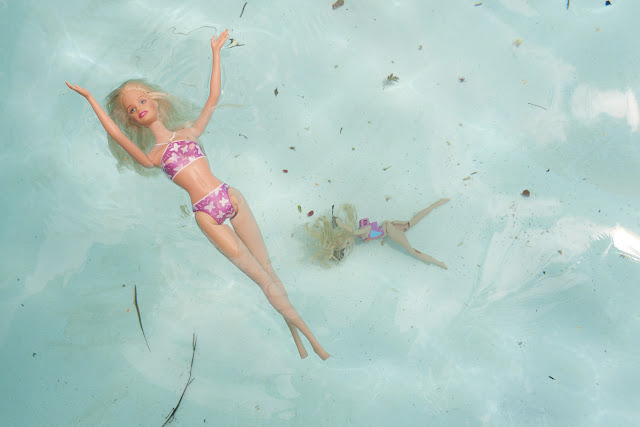Gadabedji, Niger
Entrails of dead animals hanging as meat traders buy the dead animals to cook them on the spot and send them sell them in Nigeria. The stench from dead animals is very bad in Dakoro, about 450 km Northeast of the Nigerian capital, Niamey. This vast reserve in Gadabedji is the last grazing outpost for animals across the large West African State. In the last two weeks of June, 4,000 animals died as a result of a severe food crisis gripping this nation of 15 million people and affecting nearly half of the population. Meat traders roam the area buying dying animals for a fraction of the going rate. The meat is cooked on the spot and shipped to Nigeria. One man had to sell his animals (normally worth 400,000 CFA) for 70,000 CFA. His children are severely malnourished due to a lack of food. They are among 1.6 million children who are severely or moderately malnourished. Another 1 million are at risk of malnutrition.
Agent Orange - Ed Kashi
Da Nang, Vietnam
Nguyen Thi Li, aged 9, who lives in the Ngu Hanh Son district of Da Nang in Vietnam, suffers from disabilities believed to be caused by the defoliating chemical Agent Orange. During the Vietnam War, US forces sprayed Agent Orange over forests and farmland in an attempt to deprive Viet Cong guerrillas of cover and food. The dioxin compound used in the defoliant is a long-acting toxin that can be passed down genetically, so it is still having an impact forty years on. The Vietnam Red Cross estimates that some 150,000 Vietnamese children are disabled owing to their parents’ exposure to the dioxin. Symptoms range from diabetes and heart disease to physical and learning disabilities.
Ed Kashi speaks about the project:
"I was in Danang, Vietnam to work on a short film about child victims of Agent Orange and, while shooting video, was confronted with this incredible moment where the light, composition, character and mood combined to present something magical, transcendent and ultimately beautiful in its essence. Yet, it also showed the ongoing effects of a war that ended 35 years ago. Nguyen Thi Ly, a 9 year old girl afflicted with the genetic defects associated with Agent Orange exposure, represents yet another generation of children in Vietnam who need care and support."
Andrew Biraj speaks about the project:
“Dhaka, the capital of Bangladesh, is the home of nearly 12 million people and everyday the number is getting higher. Hundreds of people rush to Dhaka daily to find a way of living, as they have no work in villages. The rising sea level makes many climate refugees in this low-lying country of more than 150 million people. Also many people are losing their homes due to river erosions. Two devastating cyclones over the last three years also left many homeless.
Most of the jobless and homeless people take shelter at the slums in Dhaka. Eid al-Fitr, which marks the end of the Muslim fasting month of Ramadan, is an occasion when they prefer to go to the places they belong. During the time, they leave the capital en masse. The train is their only option as most of them cannot afford any better transport. I wanted to show how they make their way to home. There was not even space on the rooftop of the trains, but it did not surprise anyone. People even travel sitting between carriages. They take a high risk to travel to their homes as they have no other choice.”
THE FLYING CHOLITAS, GODDESSES OF THE RING - Daniele Tamagni
Daniele Tamagni speaks about the project:
"I shot the cholitas in La Paz, Bolivia in 2010. The idea behind this project was to tell stories about three or four fighters, showing them in their daily life, while backstage and fighting. Carmen Rosa, who is 40 years old, is the founder of these women who fight almost every Sunday. She is extremely passionate about fighting and has dedicated years to gain the success she has now. Her motto is 'grace and elegance in free fighting'. I wanted to show the violence, but above all the grace. The traditional aymara dress (multi-layered skirts) have an important role in the process of reaffirmation of their identity as Bolivian and as women."
Swan Serenade - Stefano Unterthiner
Hokkaido, Japan
Whooper swans on Lake Kussharo at dawn. The warm waters of the volcanic lake are usually slow to ice over, making it a good wintering habitat. Whooper swans are a northern hemisphere swan, with a range from Iceland to beyond Japan. They breed on islands and beside lakes and slow-flowing rivers from mid-May, and also frequently inhabit estuaries, marshes and floodplains. Their diet consists predominantly of leaves, stems and roots of aquatic plants. Around October, the swans fly to more temperate areas for winter. One 1,280-kilometer-long migration route, from Iceland to Ireland, is possibly the longest sea crossing by any swan species.

Goma, Democratic Republic of Congo
The lava lake of Mount Nyiragongo, in the Virunga National Park, bubbles at the bottom of the volcano’s immense crater. Persistent lava lakes in volcanic craters are rare, with only five currently known in the world. The one on Mount Nyiragongo varies in size, but has at times been one of the most voluminous lava lakes in the planet’s recent history.
Olivier Grunewald speaks about the project:
"I took this picture from the rim of the huge crater at the beginning of an expedition during which we planned to stay inside the crater for ten days. The goal for the team has been to go down at the bottom of the crater with ropes and to try to go as close as possible of this huge lava lake. Three members of the team approached the ocean of lava within one meter. I was one of the three and took the first pictures so close to the lake."

Manly Beach, Sydney, Australia
Swimmers participate in the Cole Classic ocean race at Manly Beach, Australia on 7 February. Together, the 1-kilometer and 2-kilometer events in the race attracted 4,500 entrants.
Bibi Aisha - Jodi Bieber
Kabul, Afghanistan
Bibi Aisha, 18, was disfigured as retribution for fleeing her husband’s house in Oruzgan province, in the center of Afghanistan. At the age of 12, Aisha and her younger sister had been given to the family of a Taliban fighter under a Pashtun tribal custom for settling disputes. When she reached puberty she was married to him, but she later returned to her parents’ home, complaining of violent treatment by her in-laws. Men arrived there one night demanding that she be handed over to be punished for running away. Aisha was taken to a mountain clearing, where, at the orders of a Taliban commander, she was held down and had first her ears sliced off, then her nose. In local culture, a man who has been shamed by his wife is said to have lost his nose, and this is seen as punishment in return. Aisha was abandoned, but later rescued and taken to a shelter in Kabul run by the aid organization Women for Afghan Women, where she was given treatment and psychological help. After time in the refuge, she was taken to America to receive further counseling and reconstructive surgery.

Dalian, Liaoning, China
On 16 July, two pipelines exploded as crude oil was being unloaded from a tanker in the port of Dalian, in northeast China, unleashing a massive oil slick into the Yellow Sea. Firefighter Zhang Liang, 25, died during clean-up operations. While diving to clear debris from the submerged pump responsible for pumping water to firefighting boats, he was caught in an undercurrent and drowned. His colleague Han Xiaoxiong, and later also their instructor Zheng Zhanhong, tried in vain to rescue him.
Lu Guang speaks about the project:
"Whenever I see these pictures, I feel painful.
I have been paying attention to environmental protection and shooting on the environmental protection theme for more than ten years. On July 16, 2010, the pipeline explosion and oil spill accident happened in Dalian. Then I gave close attention to the situation of oil pollution in the ocean. On July 19, I arrived in Dalian. I got up at 4 o’clock in the morning on July 20 and shot for three hours along the seaside. At 8:10, I got to the sea area closest to the site of pipeline explosion. In the ocean with thick greasy dirt, I suddenly found two people in the oil contamination. I felt strange and shot several photos with telephoto lens at once. Then I ran towards them and asked the instructor at the shoreside. The instructor told me that they were the firefighters cleaning the oil contamination on the water pump (later the names of two soldiers were known. One was Zhang Liang; the other was Han Xiaoxiong).
After several minutes, someone shouted for help. Zhang Liang was pulled by the undercurrent three meters away from the water pump. He lost control. The instructor rushed into the greasy dirt to save Zhang Liang. He grasped Zhang’s head and hands; however, it was too slick. He seized Zhang for a while, but loosened at last. Within one minute, Zhang Liang was drowned by the oil and water. My hands began to tremble. A life disappeared in front of me. Zhang Liang sacrificed with glory at the age of 25. Han Xiaoxiong was injured because of absorbing much oil.
The two soldiers were responsible for the floating boat pump of long-distance water supply system. In order to guarantee putting out the fire and supplying water in the front, they had to clean the sundries on the floating boat pump every day, such as the oil contamination and the sea grass. They had been working for four days continuously since the explosion happened. That day should have been the date on which Zhang Liang and his fiancée took their wedding pictures.
I have been engaged in shooting for 30 years. However, this is my first time to meet such situation. Whenever I recalled the scene and saw these pictures, I felt painful in my mind. At first, I didn’t want to see these pictures anymore. Without the oil contamination, Zhang Liang would not die. The fire fighting solider Zhang Liang sacrificed for people. Through these shocking pictures, I hope that more people can pay attention to pollution and realize the effect of oil to environment. This is the comfort to martyr Zhang Liang. Meanwhile, it is also the reason for my participation in to the contest and making more people see these pictures."




















































